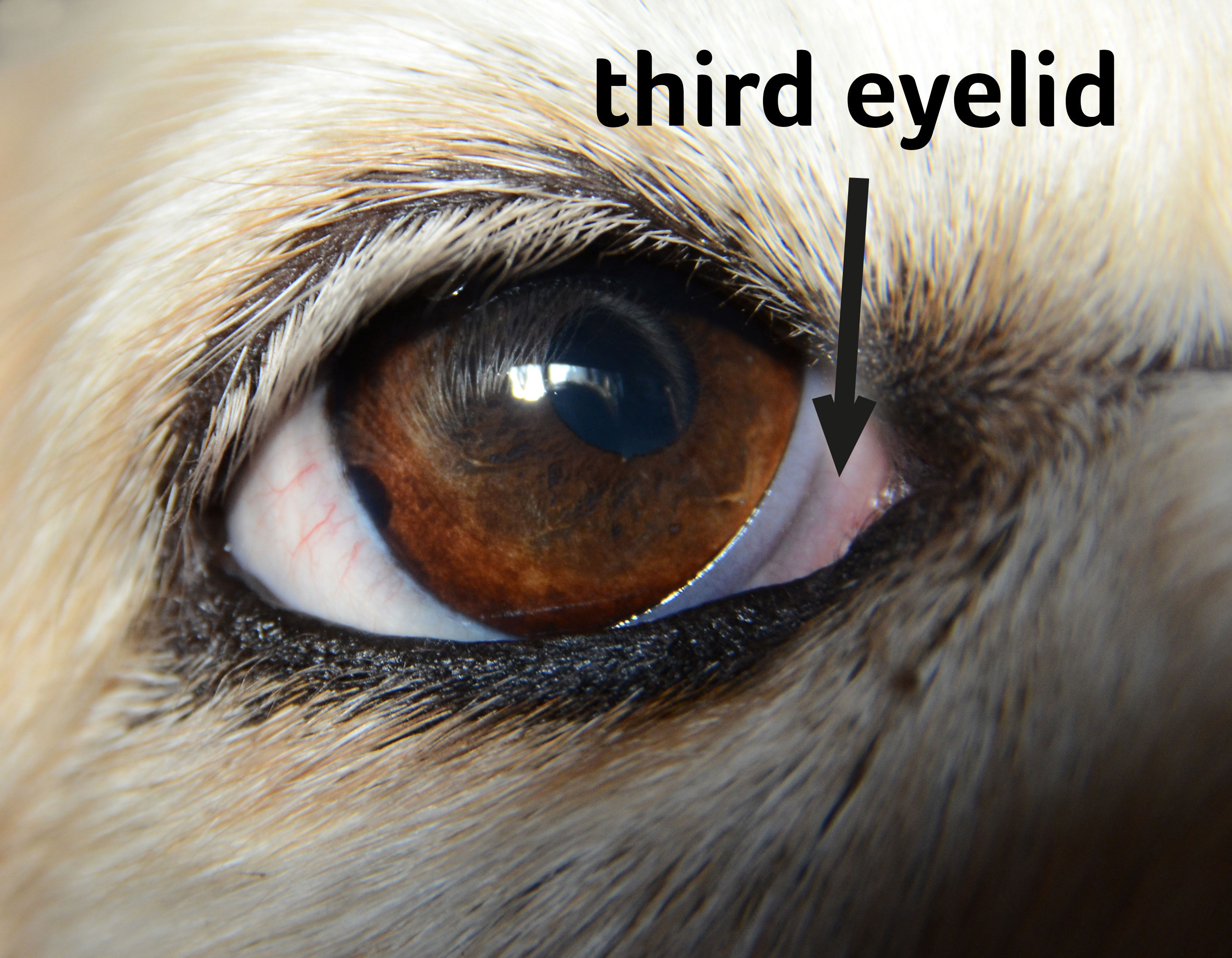Cherry eye in dogs
Overview
- Cherry eye (prolapse of the nictitans gland) is when the gland inside the third eyelid prolapses (pops out).
- Cherry eye is uncomfortable, and can lead to other problems, such as conjunctivitis and corneal ulcers.
- Cherry eye can affect any breed of dog, but is especially common in certain pedigrees such as French Bulldogs, Pugs, Great Danes, and Beagles.
- Most dogs with cherry eye need surgery to put the gland back to where it came from.
- Always contact your vet if you think your dog has cherry eye.
What is cherry eye?
As well as their upper and lower eyelids, dogs have a third eyelid that slides across their eye (see images). This third eyelid contains a tear gland, which in some cases can prolapse (pop out). When a tear gland prolapses, we call it ‘cherry eye’ because it can look a bit like a cherry sitting in the corner of the eye! Cherry eye is an uncomfortable condition, and in some cases can lead to complications such as conjunctivitis, and corneal ulcers.
Although we aren’t sure exactly what causes cherry eye, we do know that it tends to run in the family, and affects certain breeds of dog more than others. Cherry eye is especially common in the following breeds:
We strongly recommend avoiding breeding from any dog that has suffered with cherry eye (even if they have had it corrected).

A dog's third eyelid.

A dog with cherry eye.
Treatment
Your vet may suggest the following treatment:
Surgery to replace the gland
In the past, it was common to remove prolapsed tear glands, but this isn’t done anymore because we now know that this can lead to a condition called dry eye. Instead, we treat cherry eye by sewing the gland back into a pocket inside the third eyelid. This procedure is often successful, but it’s important to be aware that in some cases, the gland can re-prolapse and it can take more than one attempt to cure the problem completely. If your dog’s cherry eye is particularly challenging to treat, they may need to visit a specialist eye hospital for surgery.
Eye drops
Your vet may prescribe eye drops to keep your dog comfortable before, during, and after surgery. False tears can be used to keep the eye moist, anti-inflammatory drops can be used to reduce any swelling, and antibiotic eye drops may be necessary if your dog develops an infection. If your dog is given antibiotic eye drops, it’s very important to follow the instructions and complete the course to make sure the infection doesn’t come back. Watch our video on how to give your dog eyedrops below.
 Video found at youtu.be/VZHtrertQNY
Video found at youtu.be/VZHtrertQNY
Pain relief
It’s likely that your vet will prescribe your dog some pain relief before and after their surgery.
Care after surgery
You will need to look after your dog carefully once they have had surgery, and there are a few things you can do to reduce the chance of their cherry eye returning:
- Make sure they wear their buster collar so they can’t rub or scratch their eye, keep it on until your vet says otherwise.
- Avoid any activities that will raise the pressure in their eyes, such as running, jumping or playing.
- Remove your dog’s normal collar while they are recovering, and use a harness instead – this is because pressure on their neck can raise the pressure inside their eyes.
Outlook
Fortunately, most cases of cherry eye are curable, even if it takes a few operations or a visit to a specialist eye hospital.
However, it’s important to be aware that if your dog has had cherry eye in one eye, they might develop it in the other. And that dogs with cherry eye are at a higher risk of developing dry eye (so your vet may want to check your dog’s tear production from time to time).
Cost
Treatment for cherry eye can cost hundreds of pounds, and if the surgery needs to be repeated, the cost will increase. It’s very important to speak openly to your vet about your finances, the cost of treatment, as well as what you think is right for your dog. There are often several treatment options so if one doesn’t work for you and your pet then your vet may be able to offer another. It’s also important to consider insuring your dog as soon as you get them, before any signs of illness start, so you have all the support you need to care for them throughout their life.
Published: April 2021
Did you find this page useful?
Tell us more
Please note, our vets and nurses are unable to respond to questions via this form. If you are concerned about your pet’s health, please contact your vet directly.
Thank you for your feedback
Want to hear more about PDSA and get pet care tips from our vet experts?
Sign up to our e-newsletter
Written by vets and vet nurses. This advice is for UK pets only. Illustrations by Samantha Elmhurst.

